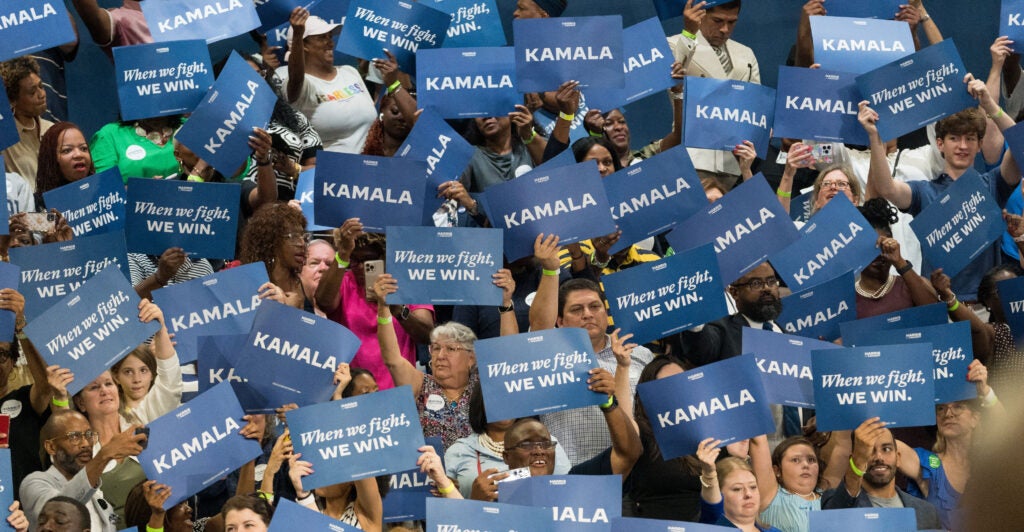The “White Dudes for Harris” Zoom call last Monday night, with some 90,000 registered to participate, was surely a landmark in political history.
Nearly 200 years ago, when the Democratic Party was being formed to elect and reelect Andrew Jackson, the entire American electorate, with exceptions, such as black New Englanders, property-owning black New Yorkers, and New Jersey widows, was made up of “white dudes.”
Unlike most organizers of ethnic and demographic groups backing a party’s candidate, White Dudes for Harris founder Mark Greene has dim regard for his target group. “Man Box culture has positioned white men at the top of a bullying and rigid dominance-based culture of masculinity which teaches us that the only power that matters is the power we create over others,” Greene writes in an X post.
“The result,” he goes on, “has been an economic, political and environmental disaster.”
That’s a bit myopic, overlooking the outsize role American “white dudes” have played in ending slavery, inventing labor-reducing machinery, producing widespread prosperity, liberating millions from racist and communist totalitarianism, and opening political participation to others.
Once upon a time, politicians appealed to “whites” as members of dozens of different ethnic groups. Blogger Matthew Yglesias unearthed a collage of 1972 campaign buttons for groups “for President Nixon” from, in alphabetical order, Armenians to WASPs, or white Anglo-Saxon Protestants. No mention of “dudes.”
Today, gender is more relevant. “Gender polarization,” The Atlantic’s Derek Thompson wrote, “is the skeleton key of the 2024 election.” To which the Washington Examiner’s Conn Carroll replied, it “isn’t gender, it’s marriage.”
In support of that proposition, Carroll quoted exit poll findings that both married men and married women favor Republicans by similar, in this case statistically indistinguishable, margins (59%-39% and 56%-42%), while there are huge differences between unmarried men (52%-45% Republican) and unmarried women (68%-31% Democrat). Thompson noted a similarly wide divide in this year’s polling between divorced men (56% Trump) and single women (29% Trump).
Those results are not atypical. The good news for Republicans is that three out of four groups favor their side. The good news for Democrats is that, in a society in which, contrary to the midcentury model, marriage is not universal, unmarried women are numerous and overwhelmingly on their side.
That’s obviously the target for Democrats’ attacks on vice-presidential nominee JD Vance’s 2021 accusation that “a bunch of childless cat ladies who are miserable at their own lives and the choices that they’ve made” are leading Democrats to “profoundly anti-child” policies.
It’s bad campaign tactics to slap derogatory labels on large demographic groups—remember former Secretary of State Hillary Clinton’s “deplorables”?—and, of course, has dismayed many who did not choose to be childless. The personal may be political, but it can also be tender.
In any case, childlessness has legitimately been in the news with the plunging fertility rate, down to 1.62 in 2023, well below the 2.1 replacement rate. This mirrors an increasing separation of the sexes, evident in less premarital sex and in political differences.
“America’s new political war,” The Wall Street Journal reported, is between young men and young women. Under-30s of both sexes favored President Joe Biden in 2020. But this year, Wall Street Journal polls find young women favoring congressional Democrats 60% to 26%, while young men favor Republicans 49% to 37%.
It’s also noteworthy, as the Manhattan Institute’s Kay Hymowitz and Heather Mac Donald wrote, that pro-Palestinian, anti-Israel demonstrations are led and peopled largely by young women, in contrast to male-heavy demonstrations in the Vietnam era.
This correlates with free-speech advocate Greg Lukianoff’s conclusion that left-wing students report poorer mental health than centrists or conservatives and that liberal young women report the most negative mental health. Why this should be the case when women are a large majority on campus is unclear, at least to me.
Traditionally, women personally and politically have been more risk-averse than men, and that showed up in their slightly greater-than-average voting for incumbent parties: In the close elections of 1960 and ’68, polls showed them narrowly supporting incumbent Vice Presidents Richard Nixon and Hubert Humphrey. Ronald Reagan’s upset victory in 1980 resulted in a wider gender gap, with women significantly more Democratic than men, apparently more averse to the risk of welfare spending cuts or a more assertive foreign policy.
Today’s politics seems to have produced a different and wider gap—a vast gulf between unmarried women and other adults.
Among young adults, there’s a wide and even geographical separation—women on campus or in malls, men off working or playing video games—which results in lower birth rates and polarized politics. In this environment, liberal politicians are suddenly comfortable participating in an all-white conclave like the “White Dudes for Harris” Zoom call.
Weird.
COPYRIGHT 2024 CREATORS.COM
We publish a variety of perspectives. Nothing written here is to be construed as representing the views of The Daily Signal.
